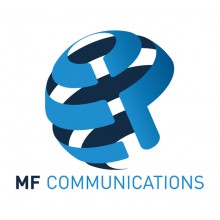Telecommunications – Trends & Technologies for 2016
In 2015, 5G and cloud networking were rightly pronounced as the most important industry trends. Both will continue to grow in 2016, as will global growth of mobile penetration and access.
5G will deliver faster mobile data rates, broader wireless coverage, more efficient signalling and lower latency; while cloud computing is the practice of using a network of remote servers hosted on the internet to store, manage and process data, rather than using a local server or a personal computer.
Mobile penetration continues to grow year-on-year. But with almost 80% of the population in Europe already signed up to mobile subscription by 2014, mobile growth rates will be more visible in other parts of the world, such as in Sub-Saharan Africa, where the figure is below 40%.
The use of 3G and 4G mobile broadband networks continued to grow with user increase of mobile devices such as tablets, phones and “wearables”. For the first time in 2015, more people connected to the internet via a mobile device, opposed to a desktop computer.
Key telecommunications technology developments in 2016 will include Machine to Machine (M2M) and the continual growth of Internet of Things (IoT) infrastructure.
Machine to Machine (M2M) is the concept of connecting different devices to transmit or receive its data remotely over a fixed wire or wireless network. M2M is used most commonly where data has to be collected from remote sources.
Much has been written about Internet of Things (IoT) and how it will effect business and our everyday lives. It is the network of all objects embedded with electronics, software, sensors, and network connectivity, which enables the collection and exchange of data.
There appears to be a general agreement that 5G will not be rolled out until 2020. So, 2016 will see the growth in popularity of other technologies such Voice over LTE (VoLTE), Voice over Wi-Fi (VoWiFi) and LTE-Advanced (LTE-A).
Voice over LTE (VoLTE)
Voice over LTE is the operation of Voice over LTE VoLTE system for providing a unified format of voice traffic on LTE, and other systems including CSFB, and SV-LTE. The VoLTE scheme was devised as a result of operators seeking a standardised system for transferring traffic for voice over LTE.
Originally LTE was seen as a completely IP cellular system just for carrying data, and operators would be able to carry voice either by reverting to 2G / 3G systems or by using VoIP in one form or another.
Voice over Wi-Fi (VoWiFi)
Voice over wireless LAN (VoWLAN) is the use of a wireless broadband network according to the IEEE 802.11 standards for the purpose of vocal conversation. In essence, it is voice over IP (VoIP) over a Wi-Fi network.
LTE-Advanced (LTE-A)
LTE Advanced (LTE-A) is a mobile communication standard and a major enhancement of the Long Term Evolution (LTE) standard.
MF Communications provide business telecommunications solutions and services to companies in over 100 countries around the world; and with a UK warehouse and a global network of suppliers, we provide new and remanufactured business telecoms equipment from leading brands such as Unify, Siemens, Nortel, Avaya, Ericsson, Aastra, Alcatel and Mitel to suit all your business needs.


